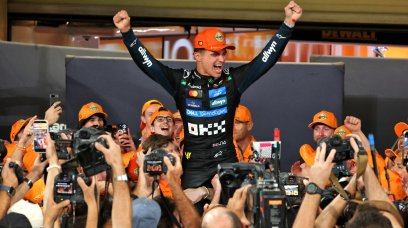In F1, a theorem always proved is that what you see is often not what makes the difference. Basically, we could say that appearances are usually deceiving. During the 2022 season it was interesting to observe how some teams have progressively adopted the same concepts, in terms of upper aerodynamics, as the RB18. We are obviously referring to Aston Martin, McLaren and Williams. The Silverstone-based team was the first, on the occasion of the Spanish GP, to adopt the sloping sides in the RB18 style, making the paddock imagine that this was the direct result of Dan Fallows' switch from Red Bull to Aston Martin. It cannot be entirely ruled out that the team was able to partially benefit from Fallows' knowledge, but it is equally correct to underline, as already reported during the season, that the AMR22 project had elements already set up from the beginning for this evolution, primarily to allow for a different housing of the radiators inside the sidepods, as we learned from Luca Furbatto, chief aerodynamicist of the team. Williams, on the other hand, modified the sidepods of the FW44 for the Silverstone race, characterized by a sloping rear end, compared to the zero-pod version at the beginning of the season. This was initially introduced onto one car. As in the case of the AMR22, this modification was not followed by a substantial improvement in the competitiveness of the car, although in both cases it represented an improvement in terms of aerodynamic balance.
The same situation was repeated with McLaren, which equipped the MCL36 with RB18-style sides starting from the French GP, then continuing in Singapore with a modification of the air intakes, also inspired by Red Bull. Even the MCL36, despite the modification to the sidepods and continuous variations to the edges of the floor, has not increased its effectiveness. The reasons behind these flops in terms of performance essentially lie in the fact that the modifications to the sidepods profiles have only partially changed the aerodynamic characteristics of these cars, as every team's floor did not correspond, in terms of flow management, to that of the RB18. To this, it should also be added that the dynamics of the Aston Martin, McLaren and Williams single-seaters differed substantially from that of the Red Bull, with the exception of McLaren, at least in terms of suspension, which adopted the pull rod layout at the front and the push rod at the rear, the same as the RB18. But what made the difference was above all the distribution of the downforce generated by the floor, and the behaviour of the car depending on the variations of the ride heights. Basically, for the introduction of the new aerodynamics to bear tangible results, it would have been necessary to make many reconfigurations to the management of the flows passing under the cars. Looking ahead to 2023, in any case, it is reasonable to expect tangible improvements from these cars, after having collected valuable data on dynamic and aerodynamic balance during the previous season.
Most read








